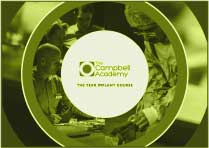.png?width=1627&height=517&name=Full%20TCA%20Logo%20(Purple).png)
It’s Friday morning and i’ve got at least a cold, if not developing full on ‘Sleaford man flu’ and I’m wading through a pile of journals and papers that have been stacking up, first in my living room and then beside my bed until my wife told me it was “time to sort that s*** out”
Mostly the process is about getting rid of the pile of stuff, but it’s cross-linked with the development of a new Campbell Academy course which starts this time next year in digital implant dentistry.
Not really supposed to talk about it but it takes this amount of lead up time to get these things in any way ready. Two of the articles that I was wading through today are quite important, not only in content construction for a course like that, but also in just the whole philosophical approach of how you might look after a group of delegates in this crazy world of digital implant dentistry.
So, I’m wading through this pile and there are a couple of papers that come out which are worth posting here.
The first one is an open access paper from Clinical Oral Implants Research 2018. You can view the paper here.
This is a systematic review of the survival and complication rates of zirconia-ceramic and metal-ceramic multiple-unit fixed dental prostheses.
It poses and answers a lot of questions about how we restore dental implants in short span (and longer) bridgework.
This was Irena Sailer with a systematic review which researched 5263 titles and 455 abstracts.
Read the paper (you always have to read the paper) but cutting to the chase, about 11.6% of the metal ceramic stuff fractured in 5 years and 50% of the zirconia.
Let me just do that number for you again in case you were unclear…
That’s 50% of the zirconia bridgework which is a zirconia base with a ceramic veneer.
There were not enough monolithic zirconia bridge studies to be included!
The conclusion is stark. ‘Veneered zirconia should not be considered as material selection of first priority for implant supported FDP’s’
You might want to think about that when either the dental industry guy, or even the laboratory guy is trying to tell you it’s much better to go down the zirconia route. Knowledge is power.
Paper two (still wading through) and this one’s on PROM’S (patient reported outcome measures) this is a cracker and is produced by Tim Joda and Urs Bragger. You can find it here.
What they tried to look for here was complete digital workflow versus analog–digital workflows to see if there was any difference in patient satisfaction and there wasn’t.
What they did notice though was that the objective evaluation of the dentist seemed to reflect the perception of the patient - it’s sales.
So why are you producing single implant crowns digitally instead of analog? You’d want to know the answer for that before you invested in the technology related to it. It’s not because the patients think it’s better, because they don’t. The patients think what you think is better is better. There has to be another reason and you have to know that other reason, firstly before you spend money on the system and secondly before (perhaps) you increase the charge to the patient.
It’s not enough to ‘go digital’ because “they said you should” and it’s not enough to ‘go digital’ because “they did”. You had to do your diligence, find out how to work it and find out which parts of the system fit into the workflow that you have that will improve the lives of your patients. Do it that way and it will pay back. Do it because of FOMO and you’re on a loser.
Blog Post Number: 1925






Leave a comment